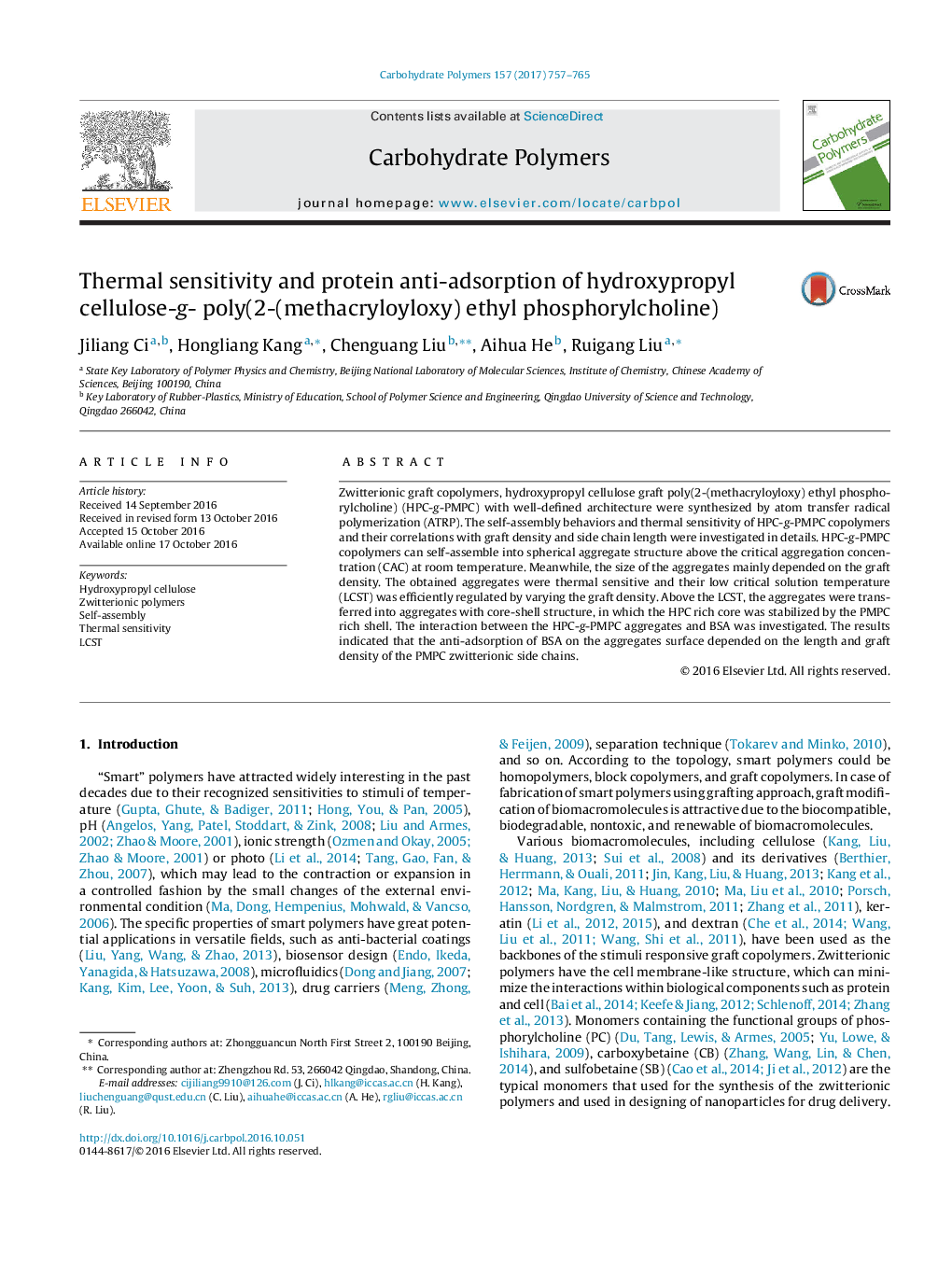| Article ID | Journal | Published Year | Pages | File Type |
|---|---|---|---|---|
| 5157876 | Carbohydrate Polymers | 2017 | 9 Pages |
Abstract
Zwitterionic graft copolymers, hydroxypropyl cellulose graft poly(2-(methacryloyloxy) ethyl phosphorylcholine) (HPC-g-PMPC) with well-defined architecture were synthesized by atom transfer radical polymerization (ATRP). The self-assembly behaviors and thermal sensitivity of HPC-g-PMPC copolymers and their correlations with graft density and side chain length were investigated in details. HPC-g-PMPC copolymers can self-assemble into spherical aggregate structure above the critical aggregation concentration (CAC) at room temperature. Meanwhile, the size of the aggregates mainly depended on the graft density. The obtained aggregates were thermal sensitive and their low critical solution temperature (LCST) was efficiently regulated by varying the graft density. Above the LCST, the aggregates were transferred into aggregates with core-shell structure, in which the HPC rich core was stabilized by the PMPC rich shell. The interaction between the HPC-g-PMPC aggregates and BSA was investigated. The results indicated that the anti-adsorption of BSA on the aggregates surface depended on the length and graft density of the PMPC zwitterionic side chains.
Related Topics
Physical Sciences and Engineering
Chemistry
Organic Chemistry
Authors
Jiliang Ci, Hongliang Kang, Chenguang Liu, Aihua He, Ruigang Liu,
